There is so much information out there when looking for an office chair. It can be hard to tell a good chair from a dud and calling a chair ergonomic does not make it so.
For the purposes of this blog post, I will stay away from specific makes and models. Instead, I am going to outline what features I have found, in my experience, constitute a good ergonomic office chair for use by the general healthy population. These are the features that you should be looking for if purchasing a chair for yourself or for your staff to provide appropriate support and adjustability.
There are chairs available with specialist features that cater for a wide range of musculoskeletal and medical issues. If you or an employee present with a musculoskeletal or medical issue, I recommend an ergonomic assessment is completed prior to purchasing any specialist workplace equipment to ensure you are getting the right equipment to address the issue.
Now, on to our general use office chairs. While they generally look similar, the range of adjustability and support varies greatly. Why do we need our DSE seating to be adjustable and supportive? Simply, one size does not fit all. We vary in stature, our work surface height vary and our musculoskeletal response to stress and strain also varies. It is important that the DSE seating reflects this, as you will be using it for 40 hours a week, if not more!
The Chair Base and Swivel
The base of any office chair should be a 5-point base on appropriate castors. Some seating providers offer different castor options to suit different floor types, or lockable castors that only move when you come off the seat.
The seat pan should also swivel 360o.
This is to allow for appropriate stability and ease of movement in and out of the workstation.
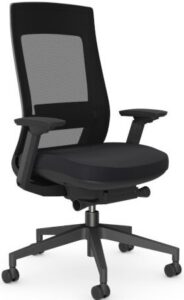
Height Adjustment
The most important feature of DSE seating is that it can be adjusted in height. The height adjustment allows the user to sit at the appropriate height for the work surface being used (elbows level with surface when shoulders are relaxed). Sitting too low or too high for the work surface causes poor postures, increasing the strain on the back, shoulders and neck.
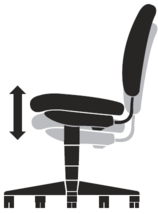
Lumbar Support
The lumbar spine, the area at the bottom of the spine that curves inwards towards the belly. When seated, the discs in the lumbosacral area comes under three times more load compared to standing. When seated without back support, the tissues and joints in the lower back get fatigued and come under strain. This causes poor posture which further increases strain on the back.
A good lumbar support that can be positioned in the lumbar curve, supports that natural curve of the lower back, reduces the workload on the muscles in the area, reduces strain on the discs and tissues and encourages good posture.
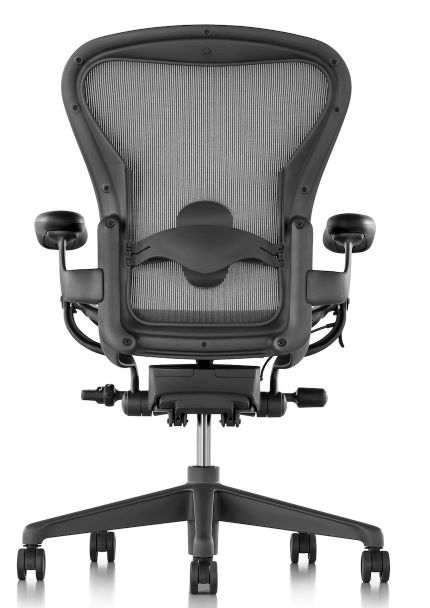
Backrest Tilt and Lock
This allows the backrest to be positioned in the most comfortable upright position for the user when typing. The backrest tilt, when unlocked and reclines during non-typing tasks, can reduce pressure on the discs and muscles in the back by allowing the backrest to take the weight of the upper body.
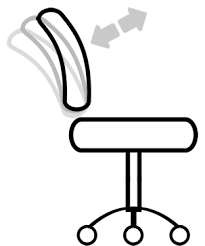
Seat Depth
When seated, it is important that your back is in contact with the backrest and your thighs are appropriately supported without reducing blood flow to the legs. If the seat is too deep for stature, the user is more likely to perch on the edge of the seat with the back unsupported. Also, when seated back against the backrest in a seat that is too deep, the pressure placed on the top of the calves reduces the blood flow to the legs, potentially causing swelling, tingling and pins and needles. If the seat is too shallow for stature, the hips and back will have to work harder to keep you stable.
The seat pan should be deep enough that it supports the thighs with a fist-sized space between the edge of the seat and the back of the knees when the back is in contact with the backrest.
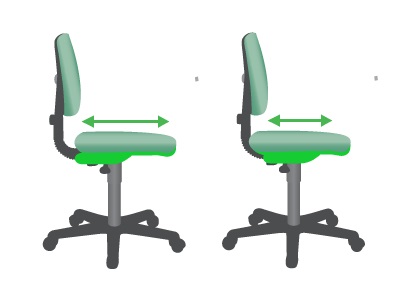
Armrest Height, Depth and Width / Rotation
Appropriately adjustable armrests support the weight of the arms, reducing the workload on the shoulders. Height adjustment allows them to be positioned just under the elbows, depth adjustment ensures they do not impede access to the desk when at the appropriate height and width / rotation adjustment allows your elbows to be positioned close to the body.
It should be noted that armrests are not always needed and can sometimes be more of a hindrance than a help. If you cannot position your armrests in a way that supports your elbows when you are seated at the appropriate height for the desk, without stopping you sitting as close as you would like to the desk, remove them.
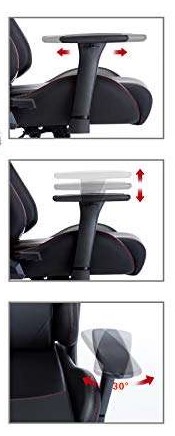
A supportive and adjustable office chair allows the user to sit at the appropriate height and posture for the DSE workstation, reducing the risk of musculoskeletal discomfort and injury. Although not always possible in the current climate, I recommend testing or trialing a chair before purchase to ensure it meets your needs.


